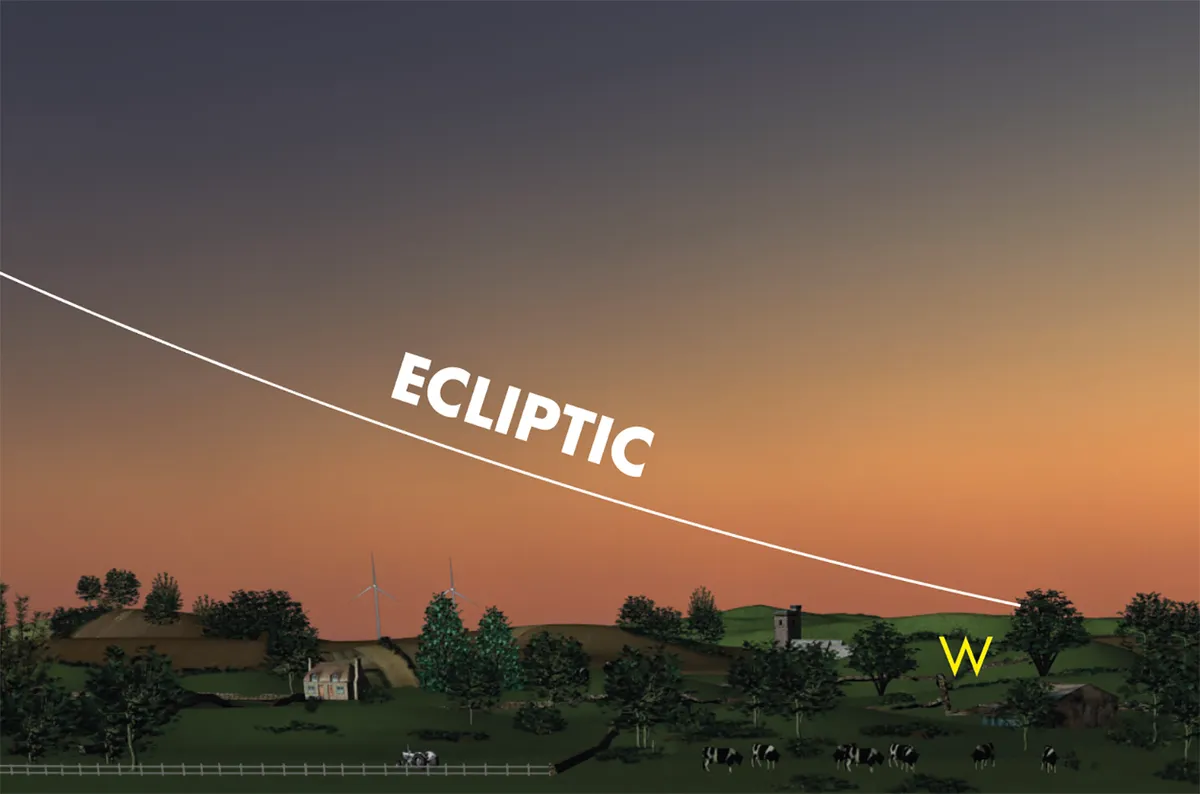Did you see the seven-planet alignment of 28 February 2025?
Perhaps you missed it, or didn't get to see all seven planets, and are wondering what planets will be visible in the night sky in March.
January 2025 saw six planets in the night sky all at once: Venus, Mars, Jupiter, Saturn, Uranus and Neptune.
Understandably, the hype and anticipation surrounding this event was huge, with many stargazers getting excited at the prospect of seeing a multitude of Solar System worlds in the same view.
By late February, Mercury had emerged into the evening sky to join the planet parade on 28 February 2025, making for a seven-planet alignment.
When will we see a seven-planet alignment again?
Astronomers are telling us a seven-planet alignment like this won't be visible again until 2040.
"Friday 28 February is the special date, with seven planets visible in the sky - if the night is clear," says Associate Professor of Physics David Armstrong at The University of Warwick, UK.
"This 'great planetary alignment' won’t happen again until 2040, as it needs all the planets to be on the same side of the Sun."
Let's take a look at what the planets are doing for the rest of March 2025.
For the best places to see the planets, read our guide to the best dark-sky sites in the UK.

Planet alignment explained
As we described in our guide to the January 2025 planet alignment, it's not surprising, or even uncommon, for multiple planets of the Solar System to be visible in the sky at once.
Nor is it surprising for multiple planets to be visible in a line.
The caveat, however, is that the line in question is a curved line that stretches across the sky and is known as the ecliptic.

The ecliptic is the apparent path the Sun traces across the sky, and is a result of our Solar System having formed from a disc of material surrounding our newborn Sun.
All the planets – Earth included – orbit in the same plane around the Sun, and so the planets occupy the same area of the night sky that the Sun occupies during the day.
The planets are always found more or less along this imaginary line, and this is one of the best ways of telling whether you're looking at a planet or a star in the night sky.

If you're standing in your garden at night and can see a bright point of light in the sky, think about where the Sun is positioned throughout the day.
Is the bright point of light nowhere near where the Sun would be? Then it can't be a planet.
The ecliptic is why planetary alignments occur: when multiple planets are visible, they'll be visible along this line.

Planets in March 2025
Mercury
Mercury can be seen in the evening sky at the beginning of March, setting 1.5 hours after the Sun on 1 March.
On 2 March, Mercury is close to Neptune, but twilight will cause problems if you're attempting to see Neptune through a telescope.
Mercury reaches greatest eastern elongation – its furthest point from the Sun on 8 March, making this a good time to see it.
On 12 March, Mercury and Venus sit close together in the sky.
Around the middle of March, Mercury's visibility starts to deteriorate, and it will reach inferior conjunction – when it sits between Earth and the Sun – on 24 March, meaning it will be lost from view.
By the end of March, Mercury will be a morning planet.
Venus
Venus has been spectacular throughout January and February 2025, and is still a beautiful bright point of light in the early evening at the beginning of March.
You can see it in the west, looking like a bright 'star' in the sky.
However, Venus's apparent position in the sky is bringing it closer to the Sun as March rolls on.
It reaches inferior conjunction on 23 March 2025, which means it's sitting between Earth and the Sun and not visible to the naked eye.
On 1 March, Venus set just over 3 hours after the Sun.
Venus and Mercury are in conjunction on 12 March, and Venus will be not visible to the naked eye shortly after this.

Mars
Mars, having reached opposition in January 2025, is still high in the sky and favourable for viewing in early March.
The Red Planet will continue to be visible even through early March 2025, having a nice encounter with the Moon on 9 March.
By the end of March, however, Mars will have dimmed, shrunk and be more tricky to see even through a telescope.
Jupiter
Jupiter has been a reliable bastion in 2025 so far, sitting high in the night sky above Orion, primed for observing.
Yet even Jupiter is set to disappear from easy view relatively soon.
Jupiter is just to the west of south at the start of March, and will have a meeting with the Moon on 5 March.
By the end of March, Jupiter is still visible around 20:00 under dark twilight, but lower in the sky than it has been.
Saturn
Saturn has finally been lost from view, and isn't visible this month
Uranus
Uranus is west of Jupiter in March 2025, and it too will lose visibility soon.
On 1 March, at 19:40 UT, the planet is 44° up in the sky. By 31 March, Uranus is just 18° up at 20:45 UT under similar conditions.
Neptune
Like Saturn, Neptune is lost from view in March 2025, and not visible.
Share your planet observations and images with us by emailing contactus@skyatnightmagazine.com

